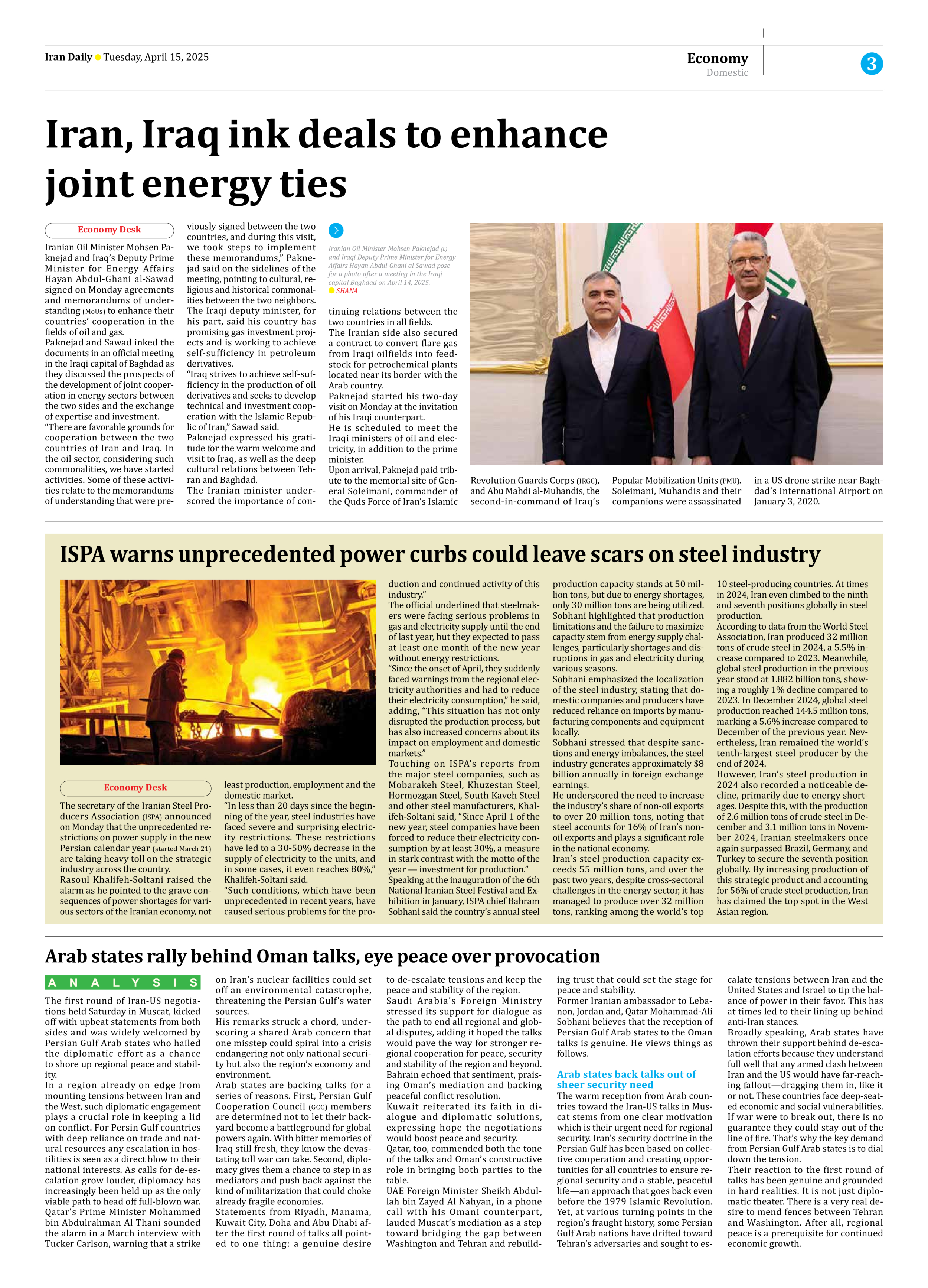
ISPA warns unprecedented power curbs could leave scars on steel industry
The secretary of the Iranian Steel Producers Association (ISPA) announced on Monday that the unprecedented restrictions on power supply in the new Persian calendar year (started March 21) are taking heavy toll on the strategic industry across the country.
Rasoul Khalifeh-Soltani raised the alarm as he pointed to the grave consequences of power shortages for various sectors of the Iranian economy, not least production, employment and the domestic market.
“In less than 20 days since the beginning of the year, steel industries have faced severe and surprising electricity restrictions. These restrictions have led to a 30-50% decrease in the supply of electricity to the units, and in some cases, it even reaches 80%,” Khalifeh-Soltani said.
“Such conditions, which have been unprecedented in recent years, have caused serious problems for the production and continued activity of this industry.”
The official underlined that steelmakers were facing serious problems in gas and electricity supply until the end of last year, but they expected to pass at least one month of the new year without energy restrictions.
“Since the onset of April, they suddenly faced warnings from the regional electricity authorities and had to reduce their electricity consumption,” he said, adding, “This situation has not only disrupted the production process, but has also increased concerns about its impact on employment and domestic markets.”
Touching on ISPA’s reports from the major steel companies, such as Mobarakeh Steel, Khuzestan Steel, Hormozgan Steel, South Kaveh Steel and other steel manufacturers, Khalifeh-Soltani said, “Since April 1 of the new year, steel companies have been forced to reduce their electricity consumption by at least 30%, a measure in stark contrast with the motto of the year — investment for production.”
Speaking at the inauguration of the 6th National Iranian Steel Festival and Exhibition in January, ISPA chief Bahram Sobhani said the country’s annual steel production capacity stands at 50 million tons, but due to energy shortages, only 30 million tons are being utilized.
Sobhani highlighted that production limitations and the failure to maximize capacity stem from energy supply challenges, particularly shortages and disruptions in gas and electricity during various seasons.
Sobhani emphasized the localization of the steel industry, stating that domestic companies and producers have reduced reliance on imports by manufacturing components and equipment locally.
Sobhani stressed that despite sanctions and energy imbalances, the steel industry generates approximately $8 billion annually in foreign exchange earnings.
He underscored the need to increase the industry’s share of non-oil exports to over 20 million tons, noting that steel accounts for 16% of Iran’s non-oil exports and plays a significant role in the national economy.
Iran’s steel production capacity exceeds 55 million tons, and over the past two years, despite cross-sectoral challenges in the energy sector, it has managed to produce over 32 million tons, ranking among the world’s top 10 steel-producing countries. At times in 2024, Iran even climbed to the ninth and seventh positions globally in steel production.
According to data from the World Steel Association, Iran produced 32 million tons of crude steel in 2024, a 5.5% increase compared to 2023. Meanwhile, global steel production in the previous year stood at 1.882 billion tons, showing a roughly 1% decline compared to 2023. In December 2024, global steel production reached 144.5 million tons, marking a 5.6% increase compared to December of the previous year. Nevertheless, Iran remained the world’s tenth-largest steel producer by the end of 2024.
However, Iran’s steel production in 2024 also recorded a noticeable decline, primarily due to energy shortages. Despite this, with the production of 2.6 million tons of crude steel in December and 3.1 million tons in November 2024, Iranian steelmakers once again surpassed Brazil, Germany, and Turkey to secure the seventh position globally. By increasing production of this strategic product and accounting for 56% of crude steel production, Iran has claimed the top spot in the West Asian region.







